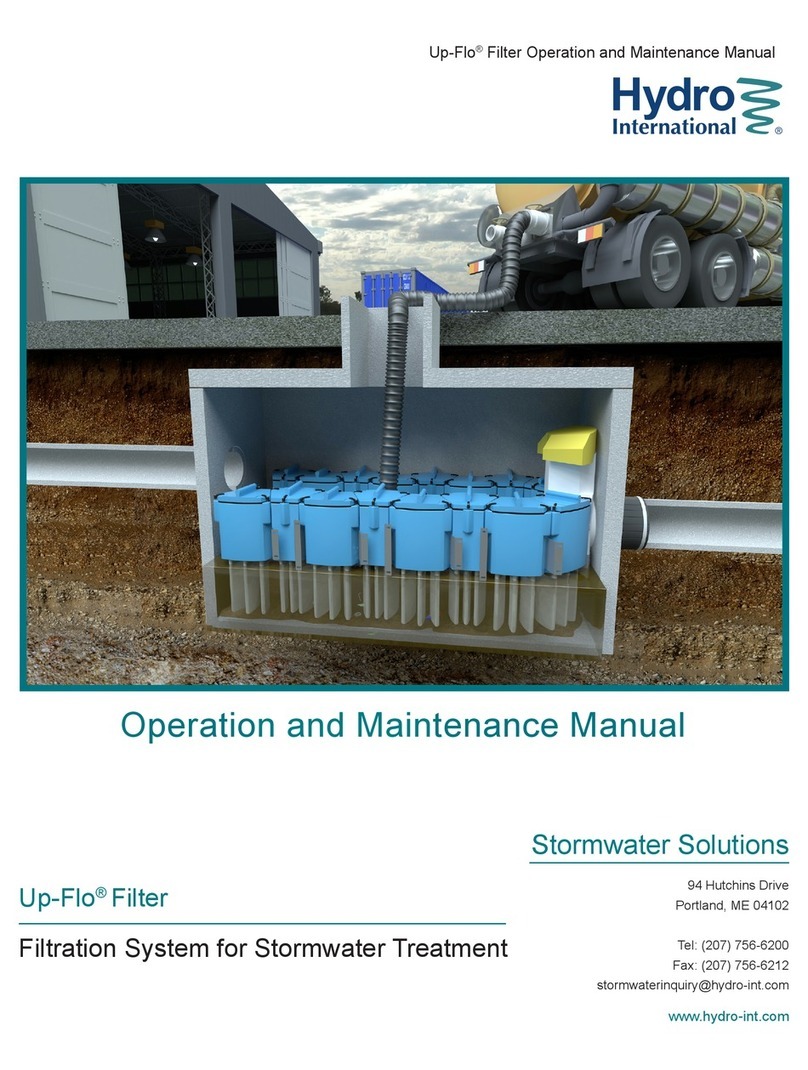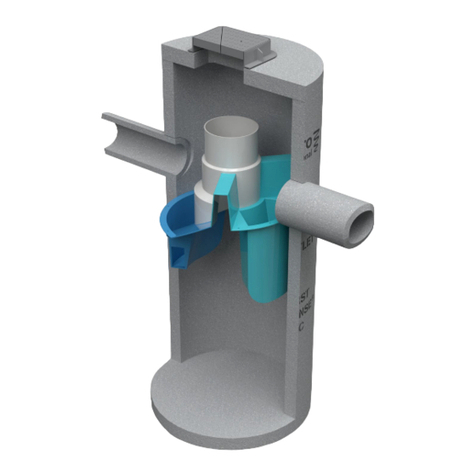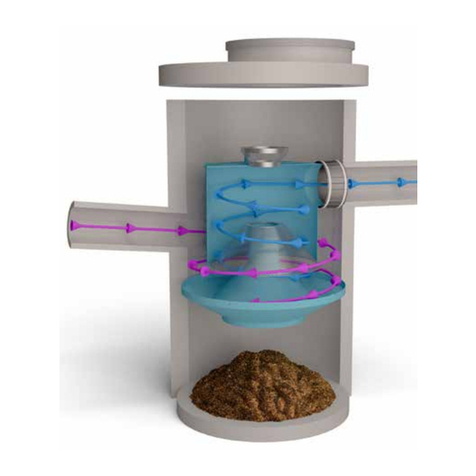
© 2018 Hydro International O&M Manual Hydro-Sludge™ Screen •Page 2.2-2
March 30, 2020
Wet Commissioning
•Set the machine to auto and start the sludge feed. Note - It is advantageous to have reasonably thick
sludge for commissioning as this helps produce a plug quickly.
•Check that the panel is monitoring pressure and the machine starts at set point (default 0.1 bar or 1.5 psi).
•Once the machine is full of sludge, stop the feed, recheck the drive load (approx. 20-25%) in manual and
adjust as necessary. Record drive load and amperage.
•Measure and record the position of the screw, dimensions Ls& Lp. Dimension sum should be same as
result for Factory Test.
•Restart the system. It is likely that some sludge will spray into the discharge box, as the plug is forming,
which may trip the machine. If this happens, the moisture detector should be switched to override during
the start-up operation and the panel reset. Once returned to normal operational mode, the moisture
detector override can be switched off.
•Make a record of the pressure values at both the inlet transducer and outlet gauge. The pressure
differential should be between 0-0.4 Bar (0-5.8 psi).
•Make a record of the drive load and amperage with sludge.
Note -Once the plug is formed, screenings will start to discharge. Initially they may be wet but will dry
with time, which could be up to several hours depending upon the type and condition of the sludge.
•
•If Gland Packing: Tighten stuffing box follower, until there is only a slight drip from the seal.
•If Mechanical Seal: Check that the mechanical seal has a good seal with no leaks.
•Stop the sludge feed and check that the inlet pressure drops below the set point and that the machine runs
on for the preset time (default 2 mins). If the pressure does not drop below the set point, check the outlet
pipework for static head and adjust to compensate. If the start pressure is adjusted, record the new setting.
•Start the sludge feed again and check that the machine starts, particularly if the set point was adjusted.
•If possible, induce an inlet pressure of over 1.5 bar and check that the machine trips. Then reset the panel.
Note - If there is no interlock between the machine and sludge feed, there is a risk of blowing out the plug.
•Continue running sludge through the machine to check the general operation.
•Carry out and record any necessary fine adjustments of the pneumatic panel (i.e. cylinder pressure, control
pressure span etc.).
Data Collection
The following is important data that should be recorded and entered onto the record data sheet, which can be
found in the appendix, section 11.2.2:
•Position of screw. (Ls/ Lp)
•Drive load and Amperage at idle. (No load, feed or plug)
•Pressure values and differential during processing
•Drive load and Amperage during processing. (Under Load, with feed and plug)
•Approximate sludge throughput in yd3/hr
This data will be the datum settings, which will eventually change during the machine’s working life.
It is therefore important to take further readings, recording them on the record data sheet, as this will indicate the
performance and condition of the machine, and whether any maintenance is required.
It would also be useful to record the following data to indicate performance of the machine.
•% dry solids of the sludge. (This will have to be laboratory measured from samples taken.)
•% dry solids of the screenings. (This will have to be laboratory measured from samples taken.)































